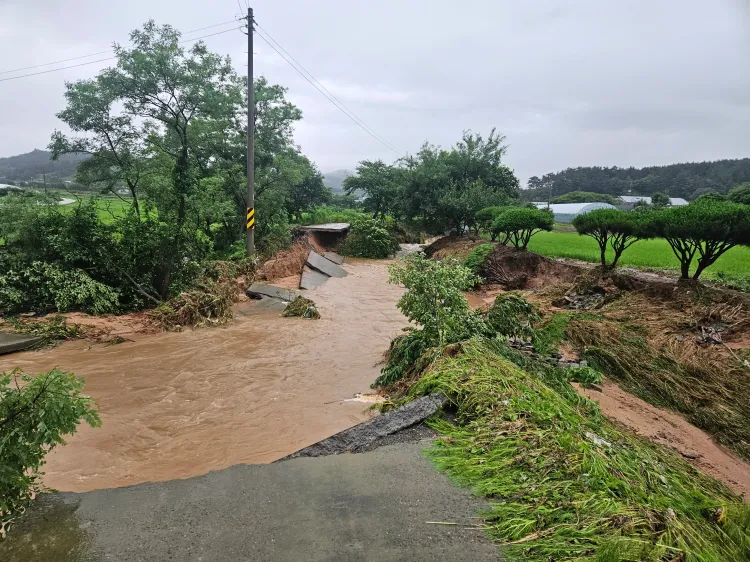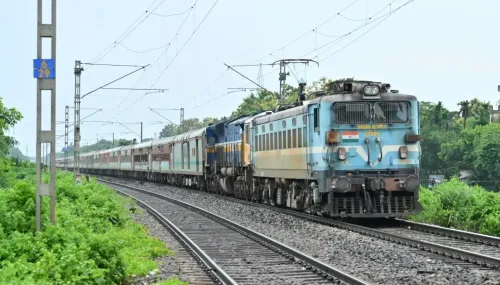What Impact Did the Torrential Rains Have on South Korea?

Synopsis
Key Takeaways
- Severe rainfall has led to significant flooding and evacuations in South Korea.
- Two individuals were rescued from a landslide in Cheongyang.
- Emergency alerts have been issued for affected areas.
- The KMA monitors rainfall levels closely to issue warnings.
- More rain is expected in the coming days, posing ongoing risks.
Seoul, July 17 (NationPress) Severe rainfall has battered South Korea's Chungcheong provinces, leading to significant flooding and mandatory evacuations. Authorities reported that two individuals, who became trapped during a landslide in the area, were successfully rescued on Thursday.
As a rain front is predicted to shift northward, the government's disaster response team has raised the alert level for the Chungcheong provinces and the southern segment of Gyeonggi Province to the second-highest tier.
Since Wednesday night, Seosan, located in South Chungcheong Province and the most severely affected area, has recorded approximately 344 mm of rain, according to meteorological officials.
In Seosan, a staggering 114.9 mm of rain fell within a single hour, from 1:46 a.m. to 2:46 a.m., marking the highest hourly rainfall in July since records began in 1968, as reported by Yonhap news agency.
The intense rainfall caused a landslide in Cheongyang, South Chungcheong Province, briefly trapping two residents before they were rescued.
Emergency services confirmed that the two individuals were taken to a nearby hospital with leg injuries, though they were not in critical condition.
In Cheongju, North Chungcheong Province, rainfall reached 67.4 mm per hour, the second-highest recorded.
As of 7 a.m. Thursday, 26 emergency alerts for heavy rain were dispatched nationwide through mobile phones, with 25 alerts specifically targeting the Chungcheong region.
The Korea Meteorological Administration (KMA) issues these alerts when hourly rainfall surpasses 50 mm and three-hour cumulative rainfall exceeds 90 mm, or when one-hour rainfall alone exceeds 72 mm.
Additional rain is anticipated to continue affecting the nation until Saturday.
The greater Seoul area and Chungcheong Province are forecasted to receive between 50 to 150 mm of rain, while North Jeolla Province may see 30 to 100 mm, and Gwangju and South Jeolla Provinces could receive 20 to 80 mm by Friday.
The southern regions, including Ulsan and Busan, are also expected to face heavy rainfall starting Friday, with predictions of 100 to 200 mm of rain.









